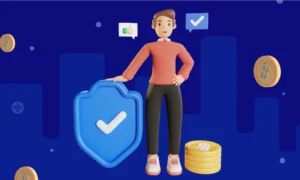Introduction
Crocheting, an age-old craft, offers a gateway to boundless creativity. Whether you’re taking your first steps or already have some experience with yarn and hooks, mastering the art of reading crochet patterns is fundamental for unleashing your creative potential. This comprehensive guide will delve into the intricacies of understanding how to read crochet patterns for beginners and illuminate the realm of free tutorials to elevate your crochet skills.
Understanding Crochet Patterns
Crochet patterns may initially appear overwhelming with their myriad of abbreviations, symbols, and instructions. However, breaking them down into digestible components can demystify the process.
- Abbreviations: The first hurdle beginners encounter when diving into crochet patterns is deciphering the abbreviations. Common ones include sc (single crochet), dc (double crochet), ch (chain), and sl st (slip stitch). Keeping a reference guide handy can expedite the translation of these abbreviations as you navigate through a pattern.
- Symbols: While not all crochet patterns utilize symbols, many do to represent various stitches and techniques. Familiarizing yourself with commonly used symbols can facilitate comprehension, especially for visual learners.
- Gauge: Gauge, referring to the number of stitches and rows per inch in crochet fabric, ensures consistency in the finished piece’s size. While not imperative for every project, paying attention to gauge guarantees alignment with the pattern’s specifications. Swatching, crocheting a small sample to check gauge, is a prudent practice to preempt discrepancies.
- Instructions: Crochet patterns typically comprise a sequence of instructions guiding you through crafting a specific item. These instructions may encompass stitch counts, repeats, shaping, and finishing techniques. A thorough reading of the pattern beforehand aids in grasping the structure and anticipating any challenging segments.
Troubleshooting Tips for Beginners
Even with a solid understanding of crochet patterns and access to tutorials, beginners may encounter stumbling blocks along the way. Here are some common issues and how to address them:
- Tension Problems: Inconsistent tension can result in uneven stitches and misshapen projects. Practice maintaining a steady tension by experimenting with different hook sizes and yarn weights. Additionally, take breaks to relax your hands and wrists to prevent fatigue, which can impact tension.
- Difficulty Understanding Instructions: Complex patterns or unfamiliar techniques may leave beginners feeling overwhelmed. Break down instructions into smaller steps, and don’t hesitate to seek clarification from online forums or crochet communities. Sometimes, watching video tutorials can provide additional clarity.
- Trouble with Gauge: Achieving the correct gauge is crucial for ensuring that your finished project matches the size specified in the pattern. If your gauge is off, try adjusting your hook size until you achieve the desired measurements. Remember to swatch and measure carefully before starting your project to avoid disappointment.
Expanding Your Crochet Horizons
Once you’ve mastered the basics of reading crochet patterns and honed your skills through tutorials, it’s time to explore the endless possibilities that crochet offers. Here are some ideas for taking your crochet journey to the next level:
- Experiment with Different Yarns: Step out of your comfort zone and try working with different types of yarn, such as cotton, wool, or acrylic. Each type of yarn has its unique characteristics and can lend a distinct look and feel to your projects.
- Explore Advanced Techniques: Challenge yourself by learning new stitches and techniques, such as colorwork, lace, or Tunisian crochet. There are countless tutorials and resources available to help you expand your repertoire and elevate your crochet skills.
- Design Your Own Patterns: Put your creativity to the test by designing your own crochet patterns. Start with simple projects and gradually work your way up to more complex designs. Keeping a crochet journal can help you document your ideas and track your progress as a designer.
- Give Back with Crochet: Use your crochet skills to give back to your community by creating items for charity or participating in crochet-alongs and community projects. Whether you’re making blankets for homeless shelters or hats for premature babies, crochet has the power to make a positive impact on the lives of others.
Free Crochet Tutorials
Once you’ve grasped the basics of crochet patterns, refining your skills through practice and guidance becomes paramount. Fortunately, an abundance of free crochet tutorial is available online, catering to various skill levels and preferences.
- YouTube: YouTube serves as a treasure trove of crochet tutorials, with channels dedicated to elucidating crochet techniques in an accessible manner. Whether you’re a novice seeking to master the fundamentals or an adept crafter tackling intricate stitches, a plethora of tutorials awaits.
- Blogs: Many crochet enthusiasts share their expertise through blogs, offering free tutorials and patterns on their platforms. These tutorials often feature step-by-step instructions accompanied by visuals, aiding comprehension and skill acquisition.
- Online Communities: Engaging with online crochet communities fosters camaraderie and provides access to invaluable resources. Platforms like Ravelry and social media groups facilitate interaction with fellow crocheters, fostering knowledge exchange and offering an extensive repository of free patterns and tutorials.
- Library Resources: Local libraries often boast an array of crochet books, magazines, and DVDs that can be borrowed for free. These resources serve as a treasure trove of knowledge, offering insights into various crochet techniques and inspiring creativity.
Conclusion
Mastering the art of reading crochet patterns is indispensable for any aspiring crocheter. By acquainting yourself with the components of a pattern and familiarizing yourself with abbreviations and symbols, you can embark on a myriad of projects with confidence. With a plethora of free tutorials available online and in print, honing your skills and nurturing your creativity has never been more accessible. So, grab your hook, seize some yarn, and embark on your crochet journey today!

































